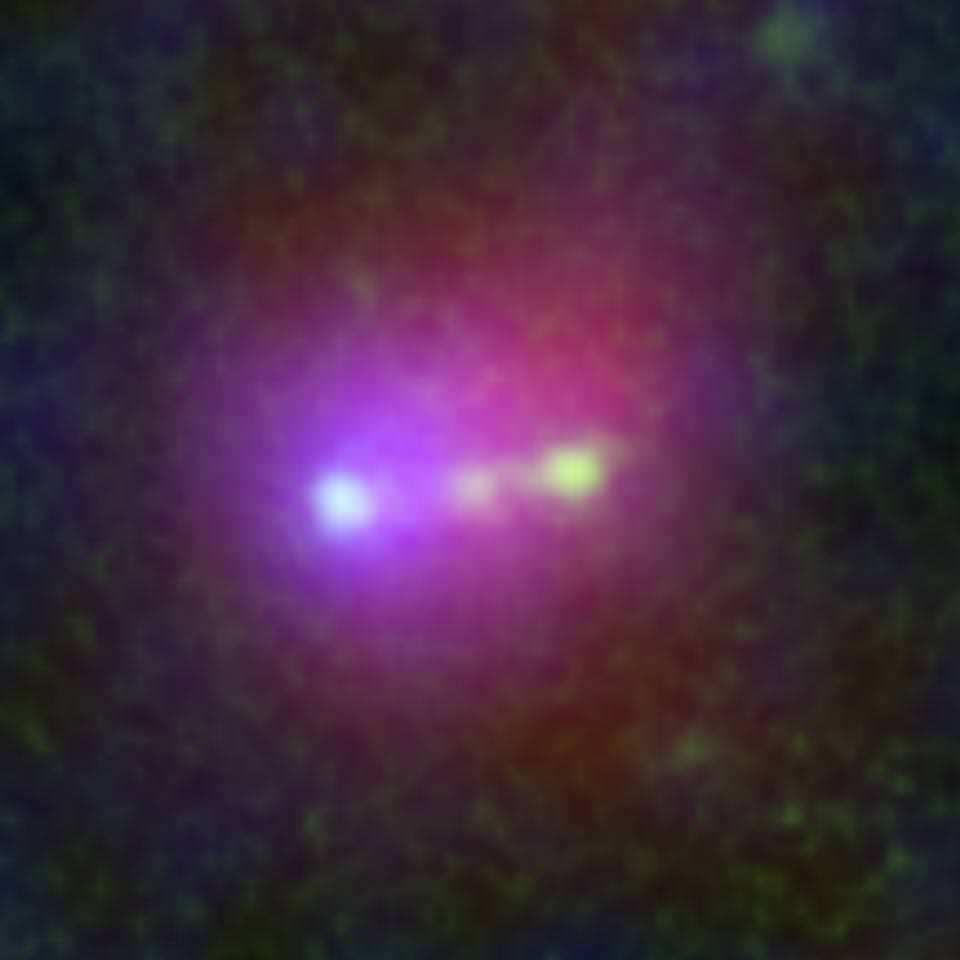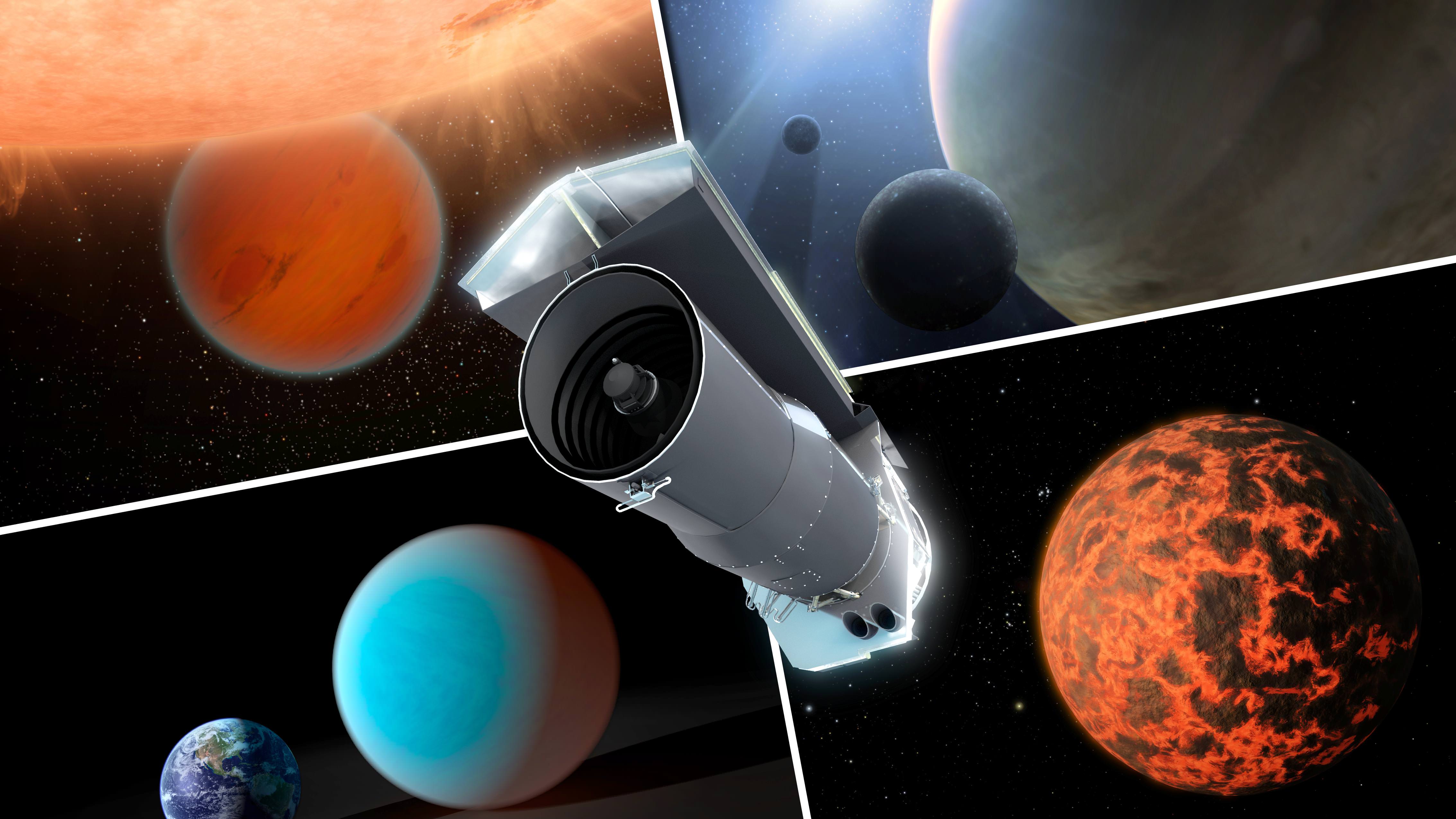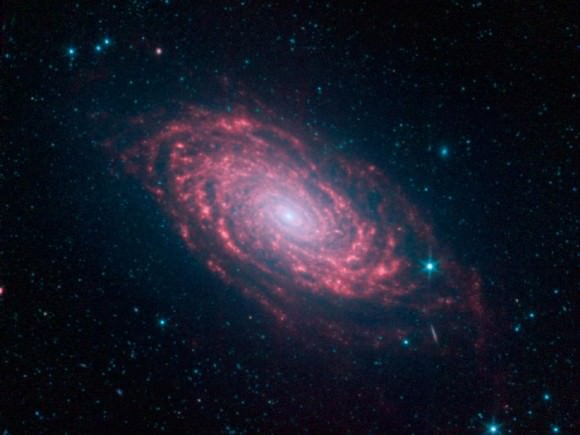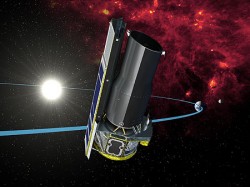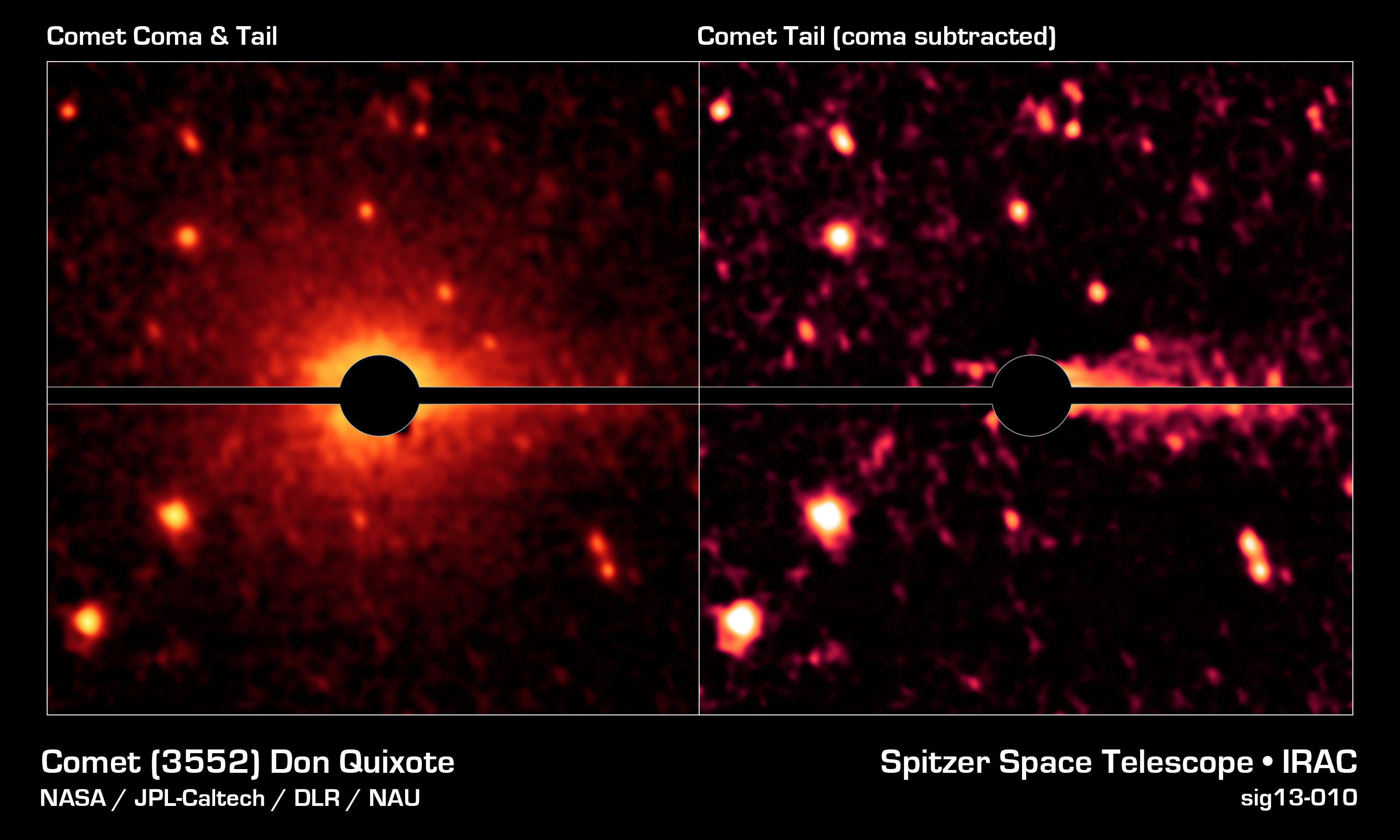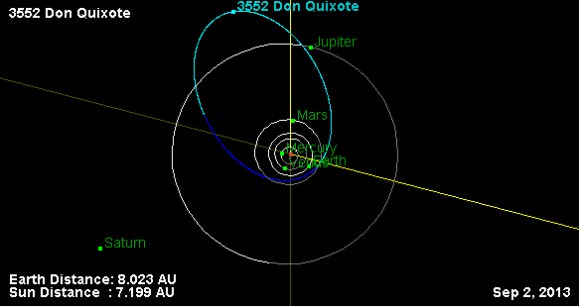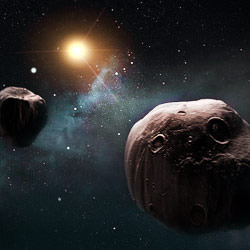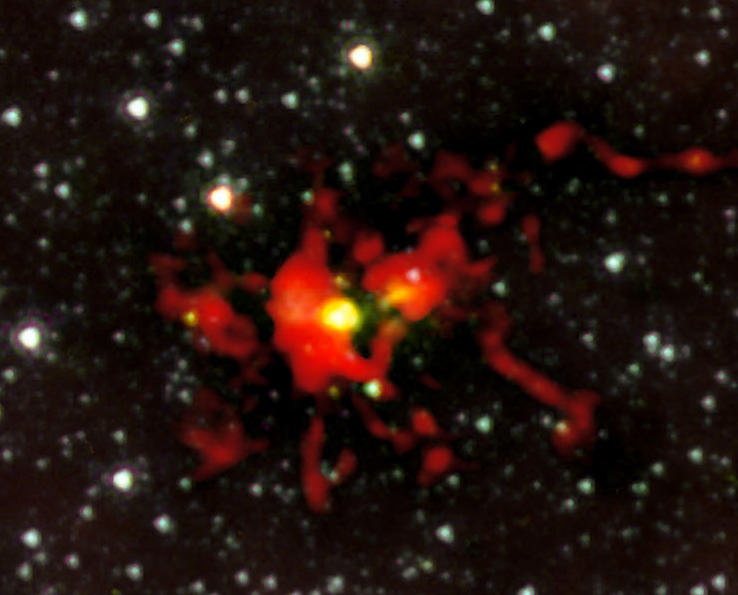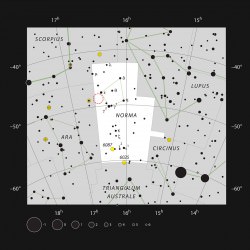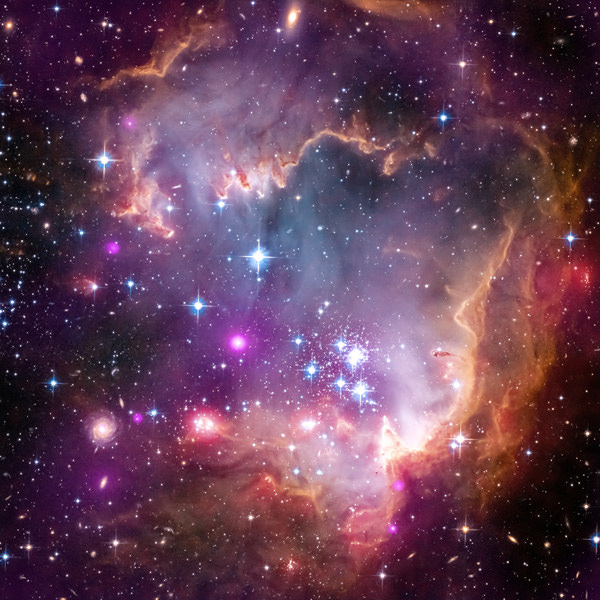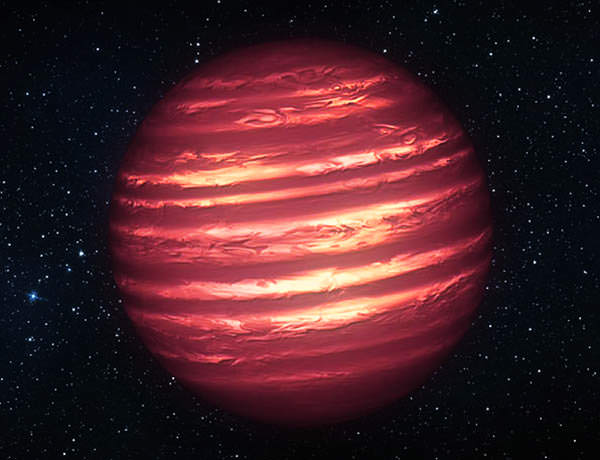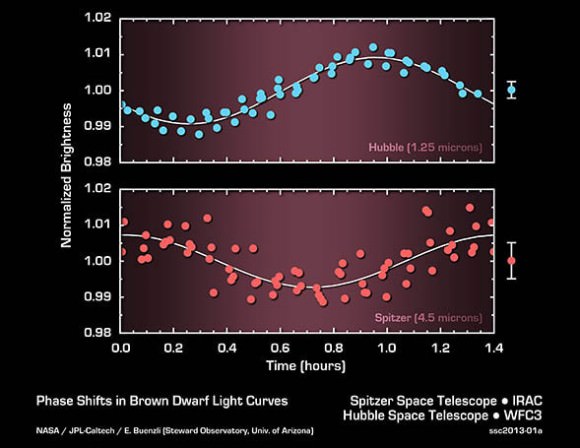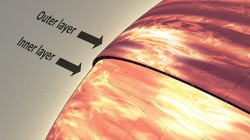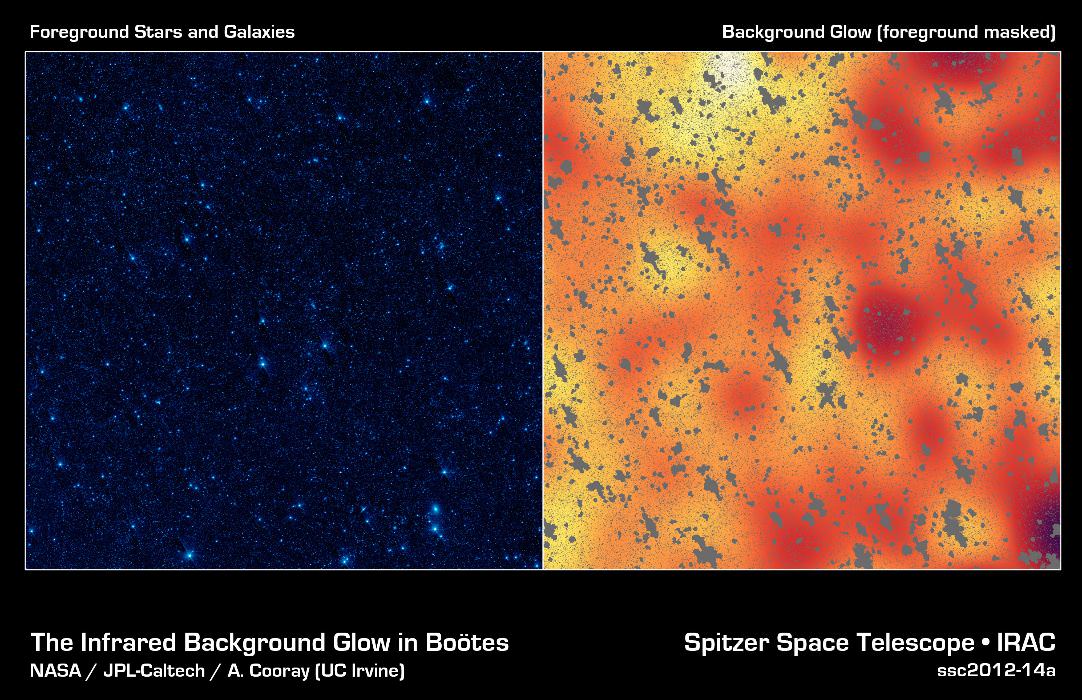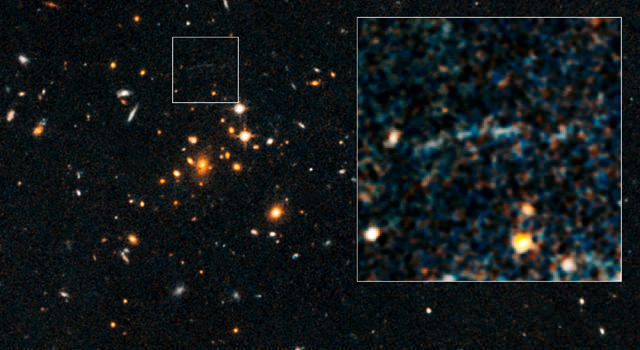The image on the left shows a portion of our sky, called the Boötes field, in infrared light, while the image on the right shows a mysterious, background infrared glow captured by NASA’s Spitzer Space Telescope in the same region of sky.Credit: NASA/JPL-Caltech
What causes the mysterious glow of radiation seen across the entire sky by infrared telescopes? The answer may lie in a combination of concepts that are relatively new to the field of astronomy, and are somewhat controversial, too. Rogue stars that have been kicked out of galaxies may be embedded in dark matter halos that have been theorized to surround galaxies. While these dark matter halos have previously only been detected indirectly by observing their gravitational effects, they may also hold the source of the enigmatic background glow of radiation.
“The infrared background glow in our sky has been a huge mystery,” said Asantha Cooray of the University of California at Irvine, lead author of the new research published today in the journal Nature. “We have new evidence this light is from the stars that linger between galaxies. Individually, the stars are too faint to be seen, but we think we are seeing their collective glow.”
The collective glow is from the “interhalo” of dark matter halos that pervade the Universe, and may answer the big question of why the amount of light observed exceeds the amount of light emitted from known galaxies.
“Galaxies exist in dark matter halos that are much bigger than the galaxies; when galaxies form and merge together, the dark matter halo gets larger and the stars and gas sink to the middle of the halo,” said Edward L. (Ned) Wright from UCLA and a member of the team that used the Spitzer Space Telescope to seek out the source of the infrared light. “What we’re saying is one star in a thousand does not do that and instead gets distributed like dark matter. You can’t see the dark matter very well, but we are proposing that it actually has a few stars in it — only one-tenth of 1 percent of the number of stars in the bright part of the galaxy. One star in a thousand gets stripped out of the visible galaxy and gets distributed like the dark matter.”
The dark matter halo is not totally dark, Wright said. “A tiny fraction, one-tenth of a percent, of the stars in the central galaxy has been spread out into the halo, and this can produce the fluctuations that we see.”
In large clusters of galaxies, astronomers have found much higher percentages of intra-halo light, as large as 20 percent, Wright said.
For this study, Cooray, Wright and colleagues used the Spitzer Space Telescope to produce an infrared map of a region of the sky in the constellation Boötes. The light has been travelling to us for 10 billion years.
“Presumably this light in halos occurs everywhere in the sky and just has not been measured anywhere else,” said Wright, who is also principal investigator of NASA’s Wide-field Infrared Survey Explorer (WISE) mission.
“If we can really understand the origin of the infrared background, we can understand when all of the light in the universe was produced and how much was produced,” Wright said. “The history of all the production of light in the universe is encoded in this background. We’re saying the fluctuations can be produced by the fuzzy edges of galaxies that existed at the same time that most of the stars were created, about 10 billion years ago.”
The light appears at a blotchy pattern in the Spitzer images.
The new finding are at odds with a study that came out this summer. Alexander “Sasha” Kashlinsky of NASA’s Goddard Space Flight Center and his team looked at this same patch of sky with Spitzer and proposed the light making the unusual pattern was coming from the very first stars and galaxies.
In the new study, Cooray and colleagues looked at data from a larger portion of the sky, called the Bootes field, covering an arc equivalent to 50 full Earth moons. These observations were not as sensitive as those from the Kashlinsky group’s studies, but the larger scale allowed researchers to analyze better the pattern of the background infrared light.
“We looked at the Bootes field with Spitzer for 250 hours,” said co-author Daniel Stern of NASA’s Jet Propulsion Laboratory in Pasadena, Calif. “Studying the faint infrared background was one of the core goals of our survey, and we carefully designed the observations in order to directly address the important, challenging question of what causes the background glow.”
The team concluded the light pattern of the infrared glow is not consistent with theories and computer simulations of the first stars and galaxies. Researchers say the glow is too bright to be from the first galaxies, which are thought not to have been as large or as numerous as the galaxies we see around us today. Instead, the scientists propose a new theory to explain the blotchy light, based on theories of “intracluster” or “intrahalo” starlight.
The team said more research is needed to confirm these findings, adding that the James Webb Space Telescope should help.
“The keen infrared vision of the James Webb Telescope will be able to see some of the earliest stars and galaxies directly, as well as the stray stars lurking between the outskirts of nearby galaxies,” said Eric Smith, JWST’s deputy program manager at NASA Headquarters in Washington. “The mystery objects making up the background infrared light may finally be exposed.”
Sources: NASA, UCLA

